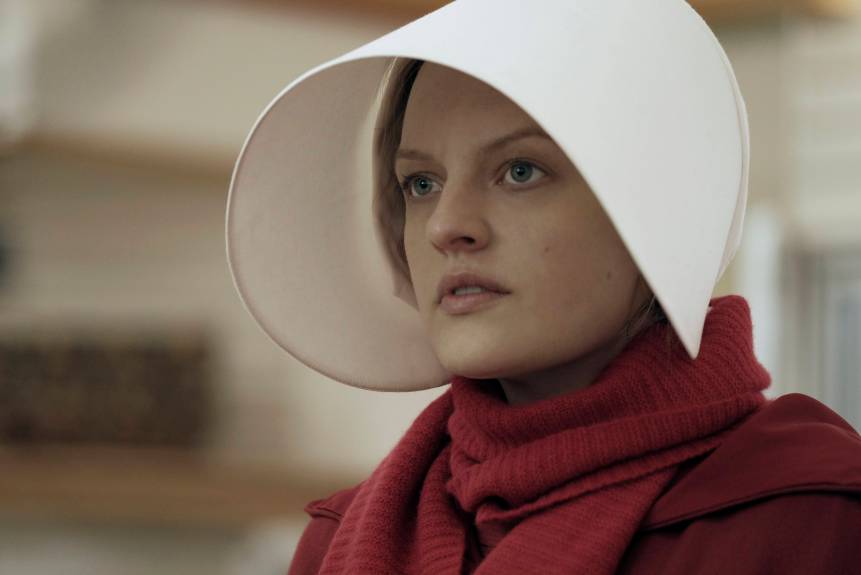The woman had been kidnapped with her husband. Her child had been killed by her captors. She was repeatedly raped by her captors. She bore children while in captivity.
For years, she was trapped in a country in which women were not allowed to be educated or even receive medical treatment except under the supervision of a male guardian.
On Sunday, Oct. 15, a group of women dressed as handmaids from Margaret Atwood’s book “The Handmaid’s Tale” marched in protest of H.R. 36 AKA the “Pain Capable Unborn Child Protection Act.” Exactly what is “The Handmaid’s Tale” (THT) about to illicit such dramatic posturing publicly?
Set in futuristic Gilead, a theocracy created by Christian militants who overthrow the United States government via assassinations of the three governing branches and destruction of the Constitution, THT lays out a dystopian society in which fertile females are called “Handmaids” and placed into homes of Commanders and their infertile wives. Human procreation is under threat biologically due to radioactivity and pollution, so reproduction is an absolute imperative for the continued existence of our species.
Even though the book portrays their necessity of existence as precious, the handmaids are treated as slaves. Their clothing, speech and movement are controlled by a spy network known as “Eyes” who are willing to punish and/or put to death any handmaiden who does not obey.
Women are also seen as second class citizens, restricted from reading or even counting money. Their currency they must use to do the household shopping is given in wooden “coins” that depict the product desired to prevent the necessity of thought brought by complex transactions.
THT attempts to use Scripture to support its premises, however completely out of context. In fact, the concept of the handmaid is derived from Gen. 30:1-3, the story of Rachel and how her jealousy of her sister’s ability to give their husband, Jacob, sons. Rachel has her maidservant, Bilhah, lay with Jacob in Rachel’s stead to bear him a child for Rachel’s sake.
Conception in Gilead is to occur via The Ceremony, which opens with scriptural reading in front of the members of the household. Then the Commander, his wife and the handmaid are to engage in a sterile act of procreation, but really it is a rape of the handmaid.
Women do not need the right to kill their child, who is wholly dependent upon them, to be empowered. Women are the biologically and biblically chosen to be the keepers of the most innocent, a blessing I personally cherish.
How the book applies to H.R. 36 is extremely vague and unclear. The book doesn’t mention much about abortion. Conception is difficult and rare in the world of THT. The world Atwood creates in THT would make abortion a taboo by all humans, including the handmaids.
No, H.R. 36 is not proof of a potential patriarchy or theocracy in America. The bill does not use Scripture. It in no way removes a woman’s autonomy over her body.
Women do not need the right to kill their child, who is wholly dependent upon them, to be empowered. Women are the biologically and biblically chosen to be the keepers of the most innocent, a blessing I personally cherish.
Margaret Atwood is gifted with her use of words, but not so much with her understanding of philosophy or Christianity. Neither does she recognize that there are places in this world that more closely resemble Gilead than America.
Joshua Boyle and Caitlan Coleman were able to return to Canada this week. Caitlan is the woman whose story seems to be straight out of a fictional book. Their Gilead was real.
